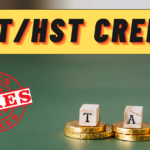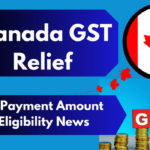$1,999 GIS Top-Up Coming This Month—But Not Everyone Qualifies in Canada. The GIS $1,999 top-up has been going viral this month. The government of Canada has launched many programs to support people financially and to grow the economy of the country. GIS is a program initiated by the government to provide monetary support to low-income senior citizens and retirees in Canada. To learn more about the topic “$1,999 GIS Top-Up Coming This Month—But Not Everyone Qualifies in Canada,” keep reading the article.
$1,999 GIS Top-Up Coming This Month
The Guaranteed Income Supplement (GIS) is a monthly payment from the Government of Canada to low-income Canadian residents aged 65 and older. This is mainly for those people who are currently receiving Old Age Security (OAS) but still are financially unstable. GIS is an additional income that is provided to OAS applicants.

The GIS provides monetary assistance to low-income seniors, whereas the OAS is available to seniors regardless of their employment history. It’s important to calculate your potential GIS amount alongside your Canadian Pension Plan (CPP) and OAS amounts to ensure that you can support your lifestyle during your golden years. In simple words, the GIS is a monthly payment that you can receive alongside your OAS payment.
Eligibility Criteria
To be eligible, you must meet the eligibility criteria as follows:
- Age Requirement: To be eligible, you have to be 65 years of age or over during the calendar year for which you are being paid.
- Citizenship and Residency: You have to be a citizen of Canada or a permanent resident by the rules made by CRA. The basic residential residency qualifications to get OAS criteria and minimum residency status are 10 years of living in Canada after attaining 18 years of age.
- Receive OAS: You must be receiving the Old Age Security (OAS) pension to receive the GIS.
- Income Threshold: Your and your spouse’s income must also be within a certain income range.
- Your income must be below $22,056 if you are single, widowed, or divorced
- Your income plus the income of your spouse/common-law partner is below:
- $29,136 if your spouse/common-law partner receives the full OAS pension
- $52,848 if your spouse/common-law partner does not receive an OAS pension
- $40,800 if your spouse/common-law partner receives the Allowance
Payment Amount
You can calculate your GIS amount by knowing what is considered “income” for GIS. Essentially the government considers both your and your spouse’s or common-law partner’s income when it calculates how much you can get each month.
One other factor is whether your spouse or partner receives the Allowance benefit as part of their GIS; the other will receive a larger monthly amount to make up for it.
| Situation | Your and your spouse’s/partner’s combined annual income | The GIS maximum income monthly amount |
| You are single, divorced, or widowed | Less than $22,056 | $1,086.88 |
| Your spouse or partner receives the full OAS pension amount | Less than $29,136 | $654.23 |
| Your spouse or partner receives the Allowance benefit | Less than $40,800 | $654.23 |
| Your spouse or partner does not receive an OAS pension or Allowance | Less than $52,848 | $1,086.88 |
How to Apply?
Follow the simple steps given below to apply for the GIS:
- Gather Your Details: Before you start applying for GIS, make sure you have the following information and documents:
- Your Social Insurance Number (SIN)
- Information about your spouse or common-law partner if you have one (Social Insurance Number, date of birth)
- Information about the countries where you have lived since age 18
- Your banking information to sign up for direct deposit
- The date you would like your payments to start
- Your reduction in employment or pension income, if applicable
- Submit Application: You can choose how you want to apply for GIS.
- Apply Online: If you are applying online, you can apply via My Service Canada account
- Apply Using a Paper Application: You can also mail the paper application to Services Canada. Also attach the required documents. You can also bring the paper application in person to a Service Canada office.
- Wait for the Response: After submitting the application, you have to wait for the response from Services Canada. You will receive a letter with either a decision on your application or a request for more information.
- If you disapprove of the decision taken by Services Canada, you can ask them to have the decision reviewed. For this you must request it in writing within 90 days of receiving your decision letter.


